Got a ticket booked to the lovely island of Madeira, but not sure whether or not you should rent a car to make the most of your trip?
I’ve got you covered!
I lived in Lisbon, Portugal, for over two years and during that time, I traveled all around the mainland and Portuguese islands.
That includes the gorgeous Madeira, where I spent a week exploring the island by car.
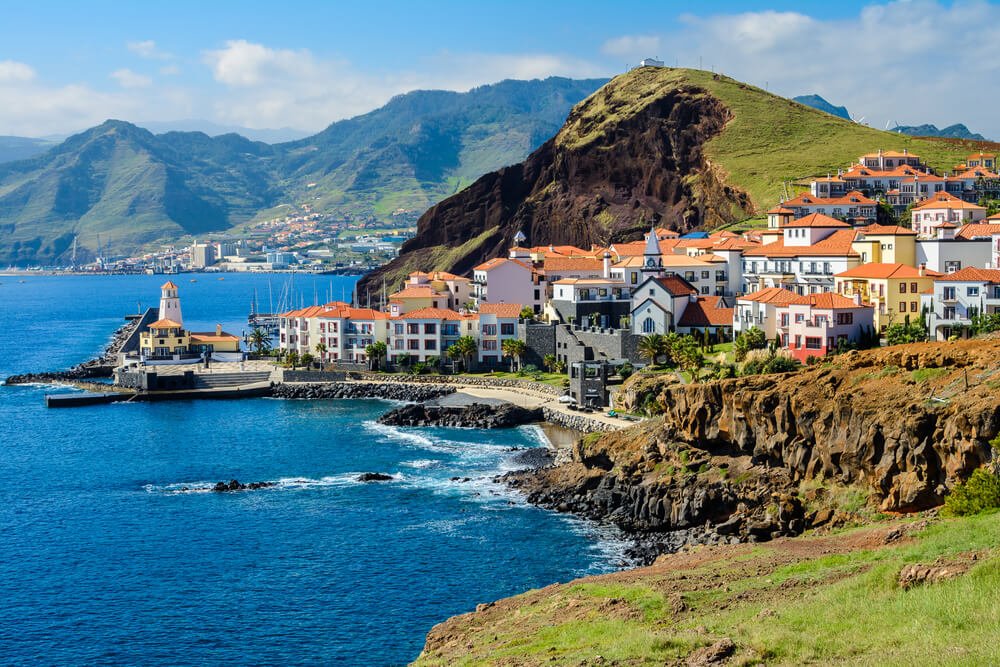
Along with the Azores, Madeira is one of two of Portugal’s two autonomous regions, stunning archipelagos sprawled across the wild Atlantic.
With pleasant weather nearly year-round, charming fishing towns, stunning beaches, and a variety of hiking trails, Madeira’s got a little something for everyone in every season.
In this article, I’ll tell you everything you need to know about renting a car in Madeira, from my own personal experience.
That includes practical information about the rental process to Madeira driving rules and tips to make the most of your road trip!
Table of Contents
Is Renting a Car in Madeira Necessary?

If you want to explore more than just the island’s capital city, Funchal, you need a car — unless you want to be reliant on guided tours for the entirety of your trip.
Some guided tours are helpful — you can’t go whale and dolphin watching on your own, for example — but others aren’t necessary if you have a rental car, like hiking tours.
While there are buses connecting the major towns across the island, most of the best places to visit will require a car.
With a car, you’ll have the freedom to get around without worrying about bus schedules, explore places off the beaten track, and enjoy the stunning landscapes as you drive around.
You can skip renting a car for the time you spend in Funchal, but other than that, it’s pretty much vital.
Where to Rent a Car in Madeira

There are two main spots for car rentals on the island: Funchal city center and Madeira’s airport, both which have a good range of car rental options.
But which to choose?
Renting a car in Funchal may be more convenient if you just want a car for a portion of your stay.
The downside is that this involves driving smack-dab in the city center, which can be slightly more stressful — plus, Funchal is rather hilly, making it not an ideal place to get your bearings!
Being the capital of the island and all, you’ll find the traffic is a little more chaotic, but if you avoid the historical center, you can get around just fine.
Renting a car at the airport, on the other hand, is easy and stress-free, since you can get your car as soon as you land — and often has more inventory.
Another perk is that you’ll start out driving on big roads, with lighter traffic and plenty of time to get used to the car.
If you choose this option and want to spend some time in Funchal, you may want to drop off the car at the airport before exploring the city in your final few days, then just take a cab to the airport for your departure.
When looking for a rental car anywhere in Europe (including Madeira!), I always use Discover Cars to search for the best deal for multiple reasons: namely, its larger inventory, its clear pricing, its cheap full coverage insurance (a must), and its free cancellation policy.
| 🚗 Best Madeira Rental Car Prices: Discover Cars This search engine not only looks at the typical rental car agencies (which can be $$$), it also looks at local, small Portuguese rental agencies that may offer better deals. Their pricing is straightforward (no bait-and-switches) and they offer free cancellation if you need it. ➜ Check rental prices in Madeira with Discover Cars here! |
Tip: Make sure you book your car rental with full coverage insurance for peace of mind — it starts at only $7 per day, cheaper than you’d get at a rental agency!
Is Renting a Car in Madeira Expensive?
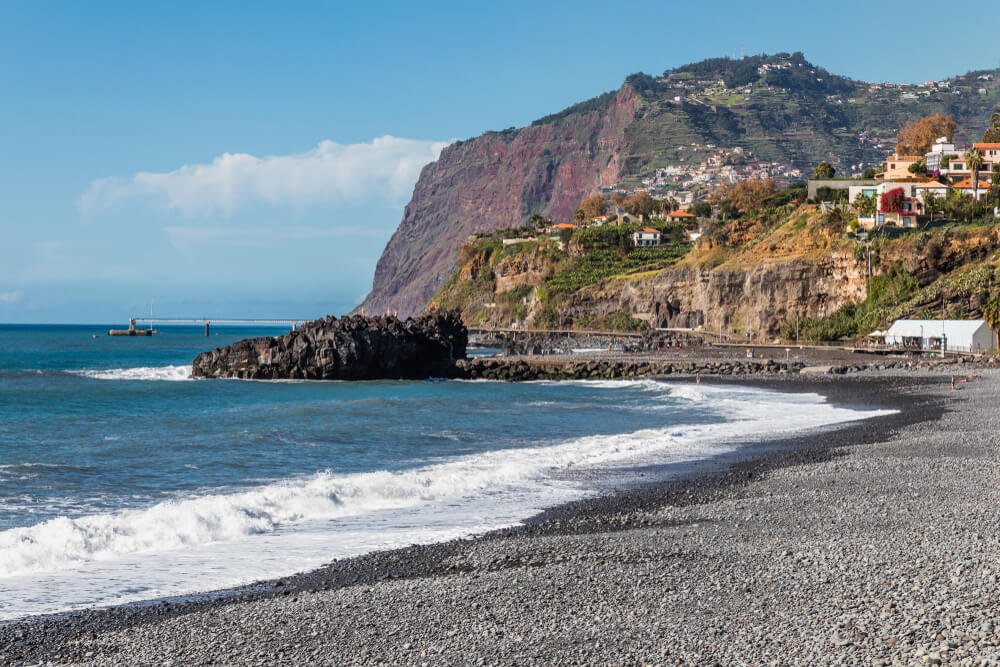
Well — it depends. You’re going to pay a lot more for, say, an automatic SUV in the peak of summer vs. a small manual car in the heart of winter!
Seasonality is the major factor here: summer is far more expensive than winter. We’re talking by a factor of 5: you may pay as little as $30 USD per day during the low season but well over $150 USD during the summer!
To combat that, booking your car in advance is a great way to save some money, so be sure to do it as soon as you know the dates of your trip — most rental companies like Discover Cars offer free cancelation in case your trip changes.
While you may find last-minute deals in winter, or even spring and autumn, absolutely don’t wait until the last moment if you travel between June and September.
Tips for Renting a Car in Madeira
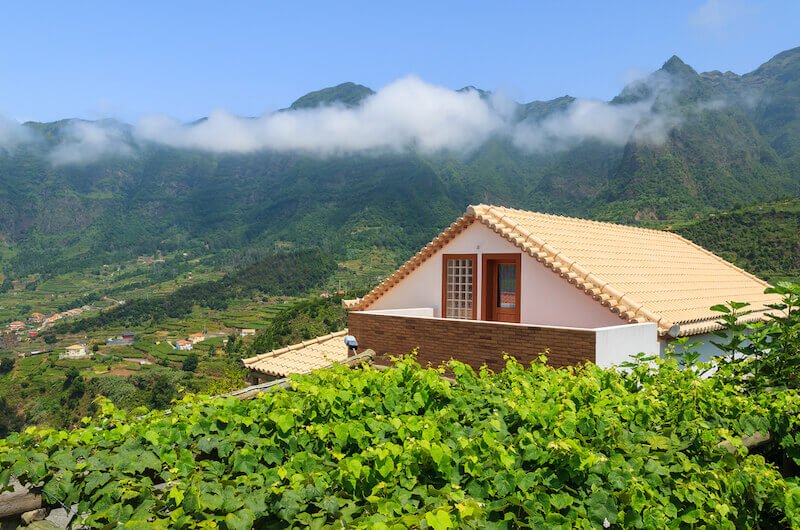
Renting a car in Madeira is fairly simple, as long as you meet all the requirements.
Here are the most important aspects of the car rental process, along with a few tips to help you choose the right car.
Bring the required documents.
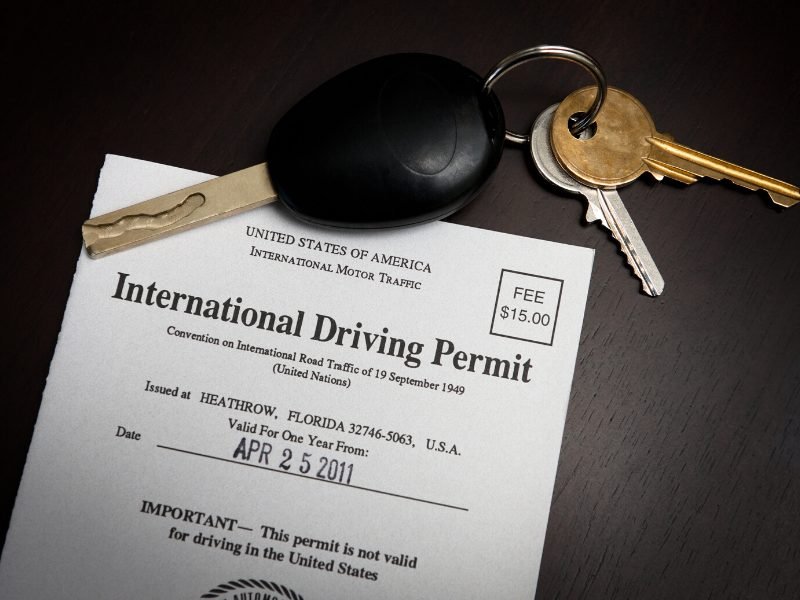
To rent a car in Madeira, you’ll need to have all your documents in order. Luckily, most travelers can drive in Madeira with their national driving license for the short term.
All European travelers, UK, Australian, and US citizens can drive in Portugal, including Madeira, without an international driving permit.
Nationals of other countries may require an IDP (International Driving Permit).
Aside from the driving license, you’ll need a valid passport and a debit or credit card. Most rental companies will require a credit card.
On top of the rental charge, companies may hold a deposit unless you purchase full coverage insurance with no excess charge.
Last, but definitely not least, note that while the driving age in Madeira is 18, rental companies usually require drivers to be over 21.
Additionally, they may also charge additional fees for drivers younger than 25.
Buy full coverage car insurance.
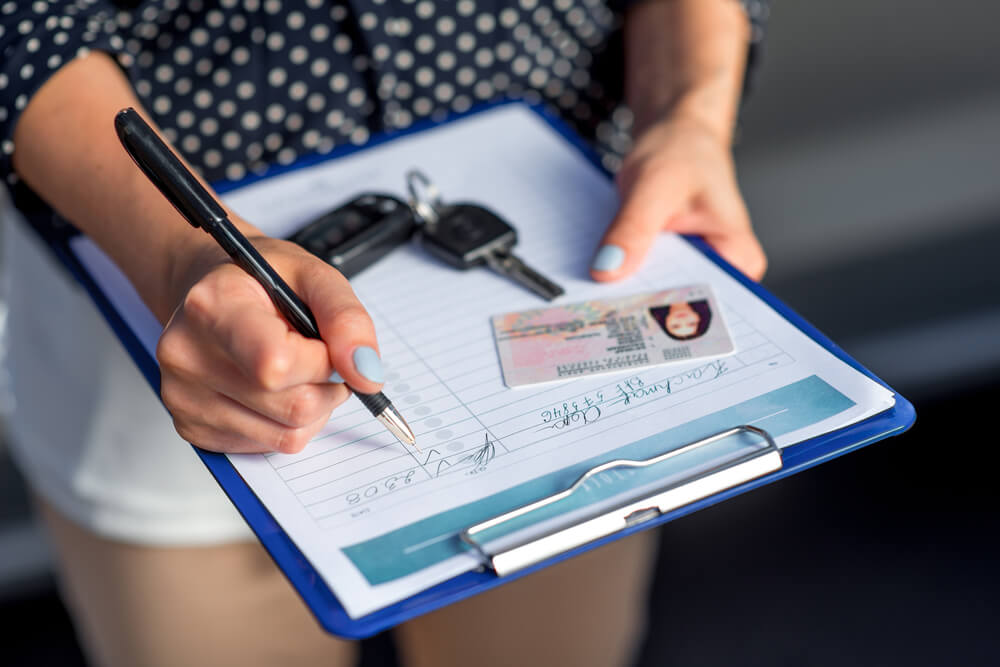
Another key step of the car rental process is understanding the insurance policies.
All rental cars in Madeira will have Third-Party Liability included by default.
This policy covers the driver’s liability for injuries and property damage, as long as all rental agreement terms are respected.
Two policies that may not be included in the initial rental cost but are mandatory for rental cars are CDW (Collision Damage Waiver) and TP (Theft Protection).
CDW covers damage to the car’s bodywork, while TP covers the cost of replacing the car in case of theft.
In addition to these required policies, you can also purchase full coverage when you rent a car from Discover Cars — it’s much cheaper than renting it at the counter when you arrive, costing just about $7/day.
This includes every little thing that you may not think about — gravel cracking a window, your car getting dinged in a tight parking space, or a more serious car wreck.
Choose the right car transmission.

First up, you should know that most cars in Madeira are manual transmission — that’s standard in most of Europe.
If you want to rent a car with automatic transmission, availability is limited, since it’s not as popular in the EU.
Plus, automatic cars tend to cost significantly more and have a smaller inventory, so plan and budget accordingly.
Basically: Book ahead, and cancel at the last minute if you need to!
Opt for the smallest car possible.

How small you can realistically go obviously depends on how many people are in your group, as well as how much luggage you have.
That said, the roads in most towns and small villages are pretty narrow, and parking can be quite tricky in some places.
Having a smaller car is a real advantage and will save you both time and headaches!
Be prepared for steep roads.

Lastly, keep in mind that you’ll drive on quite a few steep roads.
For reference, the steepest street in Funchal, Rua da Barreira, has an average gradient of over 25%.
Think about it like driving in San Francisco, but across the entire island!
I personally broke a sweat driving on a particularly steep road in Funchal, where I’m pretty sure I left skid marks when my car stopped, and I had to restart with the handbrake engaged.
So, trust me when I say you want to rent a car with a powerful engine, since it will make your life much easier.
Most cars will work fine, but avoid the very smallest ones, usually marked as “mini” on car rental search engines.
Choose your pick-up and drop-off locations.
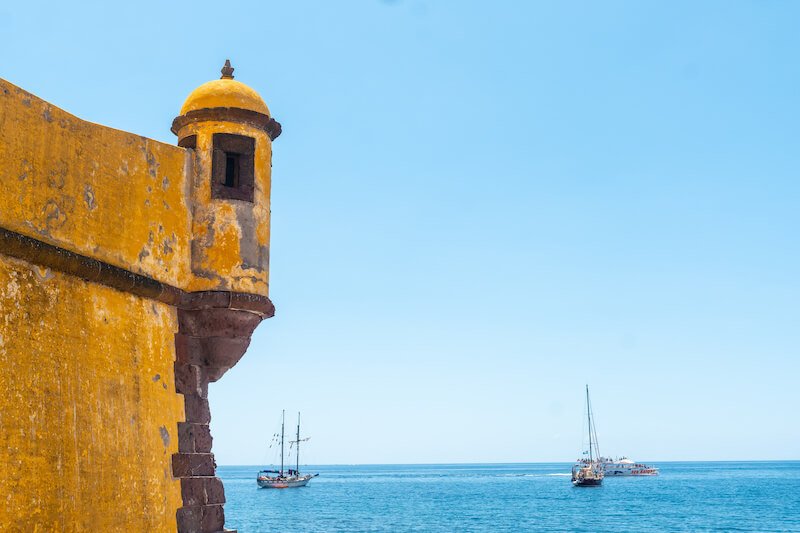
As a general rule, it’s cheapest to pick up and drop off your car at the same place.
Choosing a different drop-off location always has an extra cost, but it can be worth it if it saves you money and stress, say, if you’re traveling with a large family or you have lots of luggage.
If you don’t want to deal with a car for the time you’re in Funchal, plan to visit Funchal at the end of your trip. You can simply drop your car off, then catch a bus or taxi from the airport to Funchal.
Use navigation tools wisely.
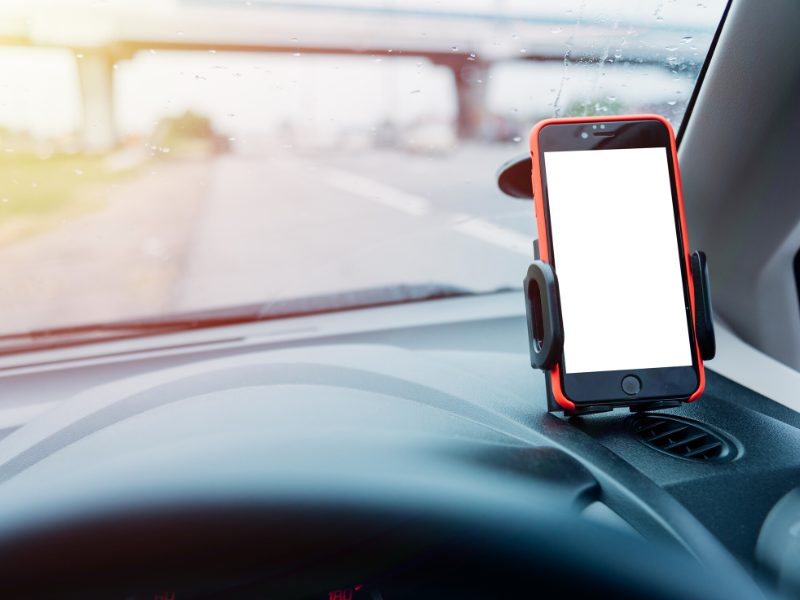
Navigation tools like Google Maps and similar apps are great but be careful and use them wisely.
It’s not unheard of for Google Maps to send you down unpaved roads where you probably shouldn’t drive with your rental car, especially if it has low clearance!
You should also note that there’s still some places on the island where you might not have cell service.
Download an offline map before you head out to find your way around, or bring a good old paper map.
Lastly, pay attention to road signs, as sometimes things change, or road work may be going on, leading to closed roads or detours.
Always carry cash.
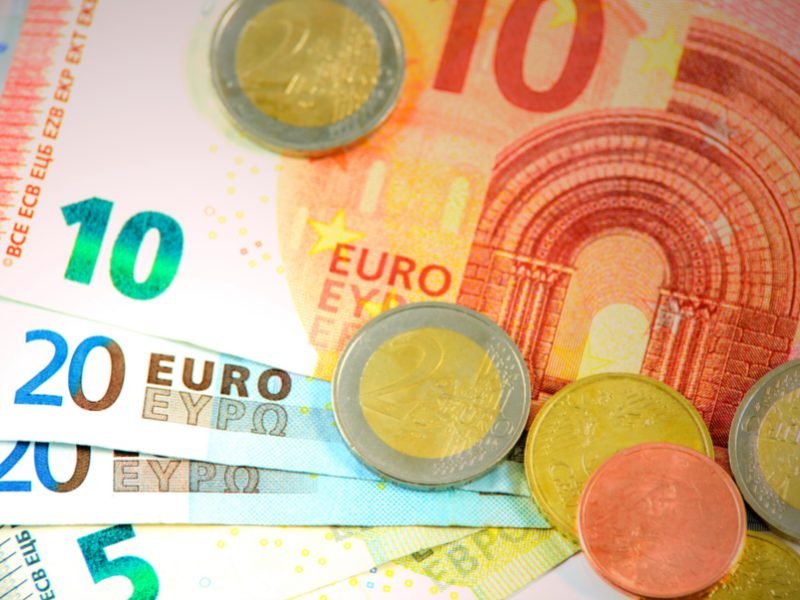
You can pay by card nearly everywhere in Madeira, including gas stations.
However, it’s always a good idea to be prepared for unforeseen situations, like your card being denied, or a particular area requesting parking money in cash.
Just to save yourself any potential trouble, take out some cash at the start of your trip and keep it on you.
Driving Rules in Madeira

Driving rules in Madeira are the same as in Portugal and most European countries.
If you’ve ever driven in Europe or other Western countries, like the US, you won’t have any difficulty in Madeira.
Traffic signs and directions are present all over the island and easy to understand.
If you follow the rules and are careful, you won’t encounter issues driving in Madeira.
Here are a few additional tips to help with your driving experience on the Portuguese island.
Road Tolls
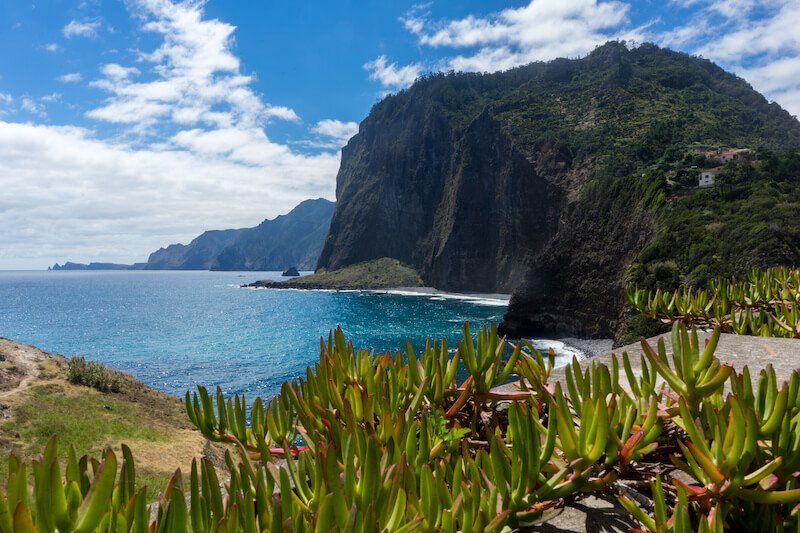
Good news! Madeira has no toll roads, so you can drive anywhere on the island without worrying about passing the right toll booth or paying your toll on time.
The island is quite small, and a few well-maintained, free highways connect the main cities.
Other than that, you’ll drive along winding roads across the mountains and along the coast with some truly amazing scenic views.
Motion Sickness

… But with those winding roads around the mountains, comes motion sickness for passengers who are prone to experiencing it.
While there are a few things you can do to mitigate it, like sitting in the front seat, if you’re traveling with a family, for example, not everyone can do that.
I recommend bringing both non-medical aids like SeaBands (which work for motion sickness on land too, as they’re based on acupressure points) as well as a medicine like Dramamine.
I personally always bring the less-drowsy formulation: it’s the Goldilocks medicine for me, where I get enough relief from my motion sickness without wanting to conk out and take a nap like when I take regular dramamine.
Parking
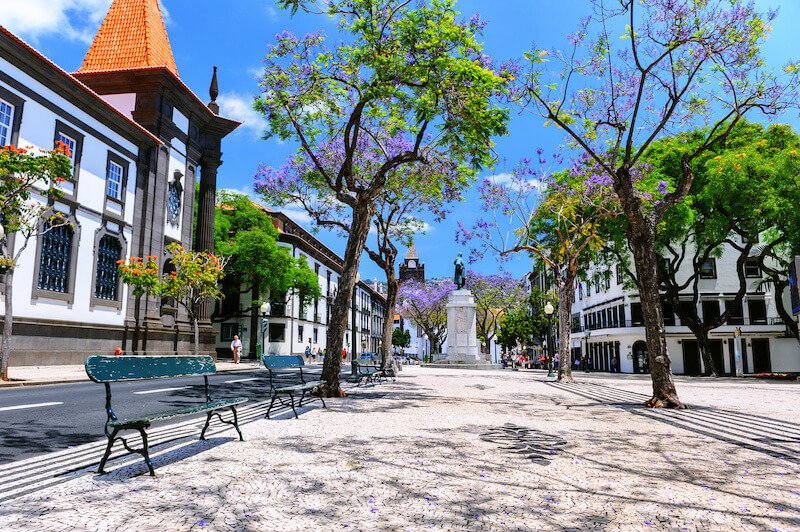
You’ll find free parking in many places across Madeira, especially on the northern shore.
Remember that free parking spots are marked by white lines and paid ones by blue lines, while yellow lines mean no parking.
This is probably the single most important rule about driving in Madeira that you need to remember!
In Funchal and other towns along the southern shore, you’ll probably end up having to pay for parking.
You will usually find parking meters that require coins, so always carry some change.
The good news is that most attractions, like viewpoints and hiking trails, have plenty of free parking spots!
Speed Limits

Another important driving rule you should always respect is the speed limit.
As a rule of thumb, the speed limit in cities and villages is 50 km/h, while on highways, it’s between 70 and 90 km/h.
The maximum legal speed is 100 km/h on some portions of the motorway (Via Rapida).
Although these are some general rules, always pay attention to speed limit signs and use common sense to drive safely.
For example, some signs — like the one above — specify a different maximum speed if it’s funny vs. if it’s foggy (a common occurrence on Madeira and Sao Miguel, as I learned while renting a car in the Azores!)
Sometimes, you may need to drive even slower, like on cobblestone streets in small towns.
Drinking and Driving
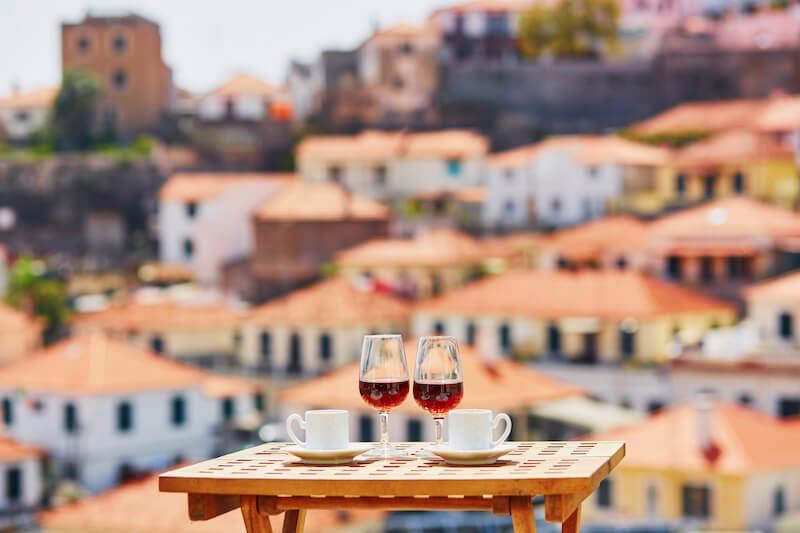
You can’t visit Madeira and not try poncha, the island’s traditional drink made with aguardiente, citrus juice, and honey.
And of course, there’s Madeira’s local wines, both its dry wines and its famous fortified Madeira dessert wine.
However, it’s better to save this for the evening, after you’re done driving and ready for a good night’s rest.
As in mainland Portugal, in Madeira, the alcohol limit when driving is 0.5 grams for one liter of blood (or 0.05% BAC, for US readers).
And trust me when I say a well-done poncha is strong!
So, stay safe and avoid drinking when driving. You’ll also avoid a huge fine and getting your license suspended.
What is the Best Time for a Road Trip in Madeira?
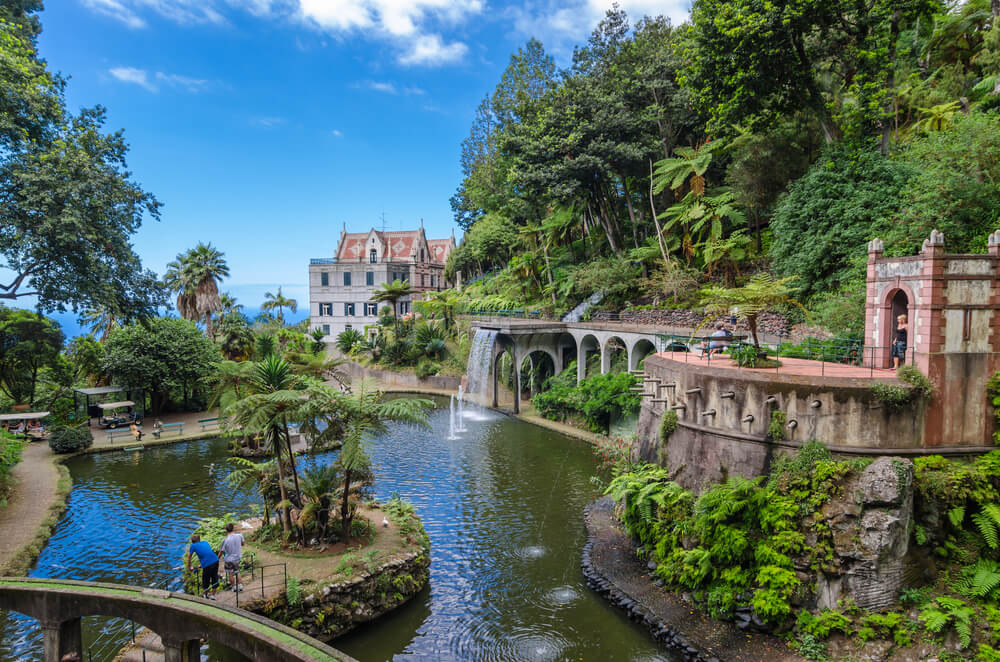
Madeira has pleasant summers and mild winters, making it a great destination year-round.
However, like most places in Europe, Madeira is very popular in summer, so expect to find it more crowded between late June and early September.
Given the pleasant weather, April and October are ideal for visiting Madeira. I went there in late September, and the weather was perfect.
From November to March, temperatures are slightly lower but rarely under 13°C (55°F). This is the perfect time to visit if you want to avoid the crowds.
Where to Go by Car in Madeira
As I mentioned above, most of the places worth visiting in Madeira require a car, and there’s no shortage of places to explore.
You could easily spend a month on the island and still have places left to discover.
However, here are a few must-see places to add to your Madeira itinerary if you plan on renting a car.
Pico do Arieiro and Pico Ruivo

These are two of the highest points on Madeira Island and among the highest in Portugal. Pico do Arieiro is easy to reach by car.
From the parking lot, walk along an easy trail to reach the peak and enjoy awe-inspiring panoramic views.
A moderate hike from Pico do Arieiro leads to the island’s highest point, Pico Ruivo.
Ponta de São Lourenço
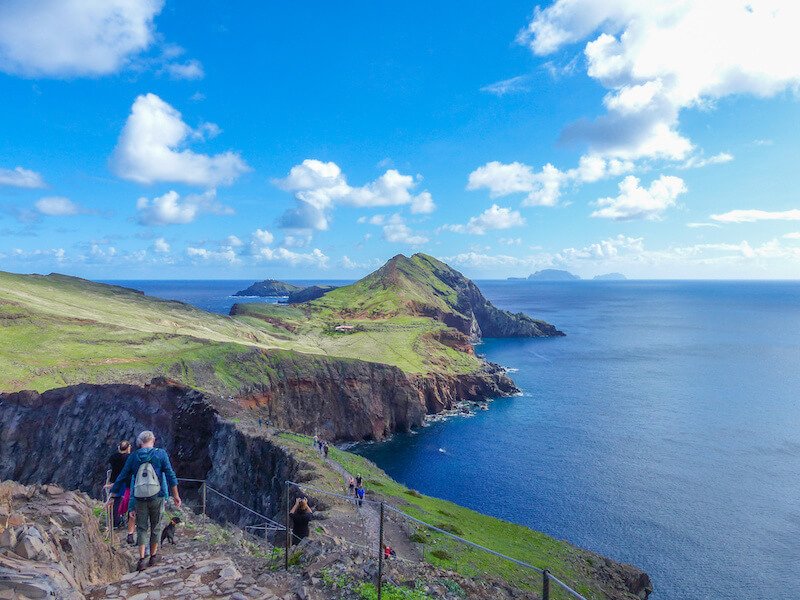
This hiking trail in the far eastern part of Madeira Island offers some of the most spectacular coastal views.
You can park in the dedicated parking lot and explore the beautiful trails until Miradouro Ponta do Furado, Madeira’s easternmost point facing the islet Ilhéu da Cevada.
Santana
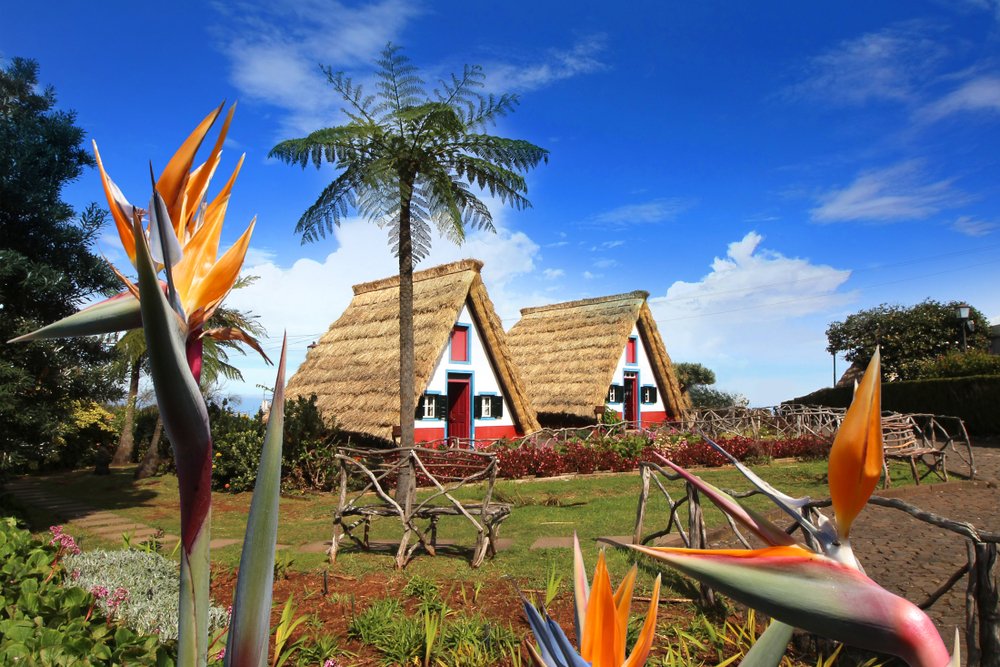
Santana is the best place to go to check out the typical Madeirense houses, one of the island’s most iconic sights.
The triangular stone houses with straw-covered roofs are all around the center of Santana, a small town on the northern coast of Madeira.
Porto Moniz
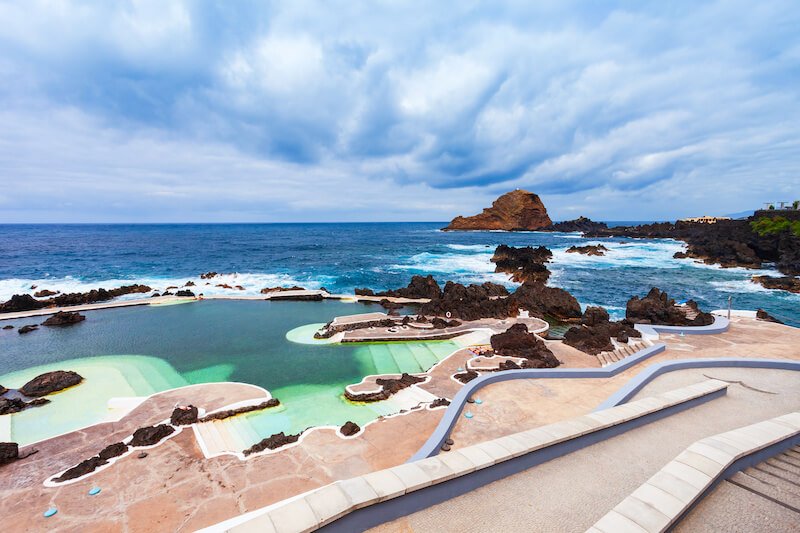
Porto Moniz is another delightful town you should not skip when driving around Madeira.
The town in northwestern Madeira is better known for its natural swimming pools.
The pools were created inside lava formations, and the ocean tides constantly fill them with fresh water. This is one of the best spots for swimming in Madeira.
Achadas da Cruz

Although this list could be much longer, one last place worth mentioning is Achadas da Cruz.
You can reach the small seaside village by catching a cable car or hiking down the hill.
The cable car ride is one of the most impressive you’ll experience, dropping down an extremely steep hill.

Roxana is a Romanian-born freelance travel writer who has lived in Italy for over 15 years. She has a Master’s in Journalism and a Bachelor’s in Film Studies, and she studied at Università degli Studi di Roma Tre. Besides her native Romania, Roxana has lived in Rome, Lisbon, and Berlin, and she has traveled through much of Europe in search of hidden gems, history, and culture.